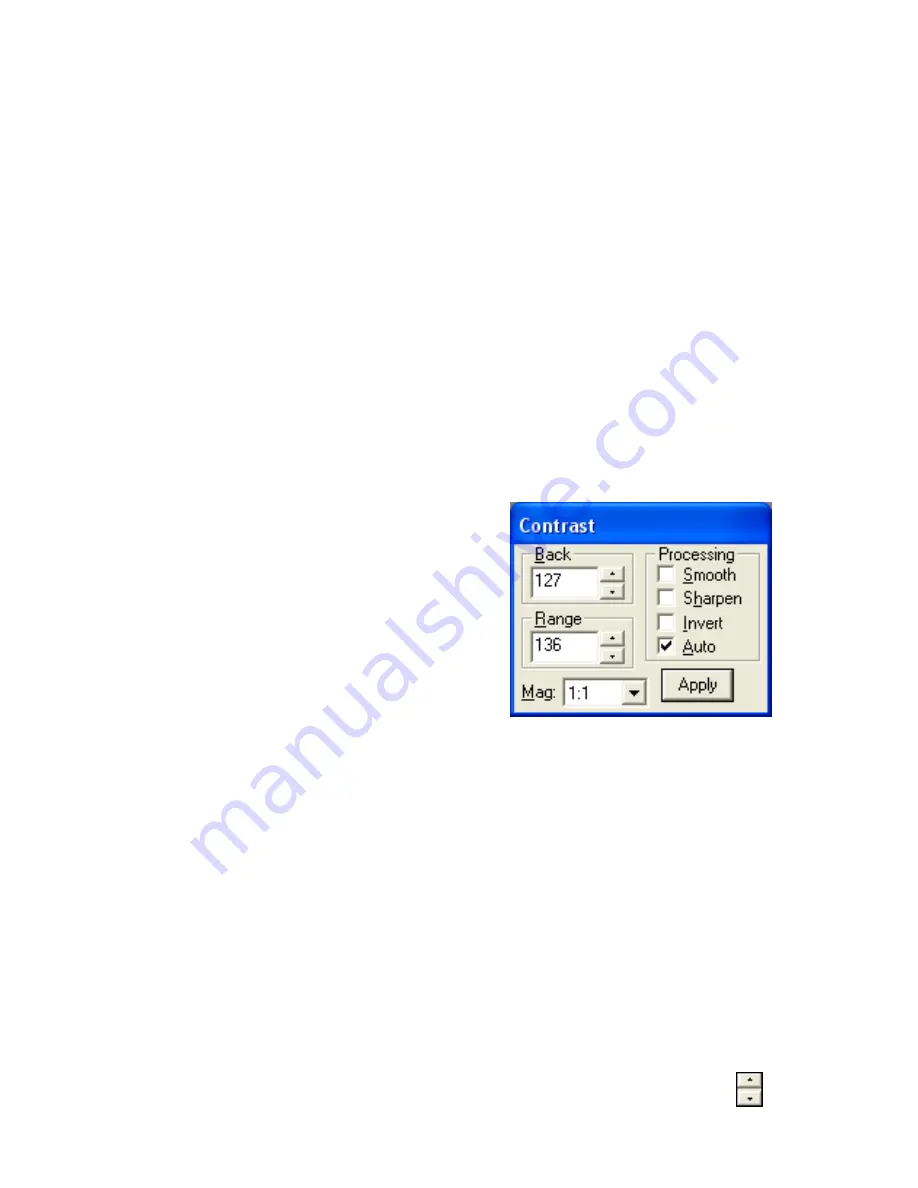
SBIG ST-8300 Manual
pixels are definitely obscuring it. Now use the
Dark Subtract
command in
the
Utility
menu. This brings up the
Open File
dialog where CCDOps
wants you to select which image to subtract. Double-click on
Image 2
, the
10-second
dark frame
. The displayed image turns completely black! What
did we do? Did we destroy the image by dark subtracting? No we didn’t
but it’s time to learn something else regarding CCD images.
Brightness and Contrast
Images from the ST-8300 are
16-bit
images meaning any pixel can have
values from 0 to 65,535 ADU where ADU is short for A/D Converter Units.
Said another way this means there are 65,536 possible brightness or gray
scale values that each pixel can have. In CCD lingo this is referred to as the
dynamic range
. But computer monitors and our eyes can typically only
distinguish a hundred or so different gray scale values. How do we
accommodate the large dynamic range of CCD images with our computer?
The answer is through
Brightness
and
Contrast
adjustments of the
displayed image.
Getting back to our dark subtracted image and why it’s completely
black. Find the
Contrast
dialog shown
to the right and then click the
Auto
checkbox. Magically our object
appears, and as promised, the
hot pixels
and the
readout glow
are gone, replaced
by the object and the salt-and-pepper
noise. What did we do?
16
Click the small up and down buttons adjacent to the
Back
several times and you’ll see the overall image
brightness
increase
By clicking the
Auto
checkbox we
told CCDOps to adjust the image
display to match the actual image’s
pixel values.
Auto Contrast
is a very
handy tool to have in your bag of tricks.
Just for fun click the
Smooth
checkbox in the Contrast dialog. The
noise in the image is greatly reduced. The
Smooth
option is handy when
for reducing the noise in underexposed images like
Image 3
.
Let’s explore the Contrast dialog further. Close the dark subtracted
Image 3
and when CCDOps asks you if you want to save the changes
you’ve made click
No
. Use the
Open
command again to open
Image 4
,
which is just like Image 3, but with a proper exposure.
The first thing to notice is that in the Contrast dialog the
Back
is set to
8,000 and the
Range
is set to 20,000. What does that mean? In short it
means that pixel values from 8,000 (
Back
) to 8,000+20,000 (
Back
+
Range
) have been displayed using the monitor’s available gray scale.
Pixels with values 8,000 ADU or below are completely black. Pixels with
values 8,000+20,000=28,000 ADU or above are completely white. Finally,
pixels with values between 8,000 and 28,000 are shades of gray.
setting
Summary of Contents for ST-8300C
Page 48: ...SBIG ST 8300 Manual 45...






























